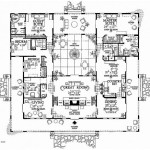Vastu Plants Indoors: Enhancing Harmony and Positive Energy
Vastu Shastra, the ancient Indian science of architecture and design, emphasizes the harmonious arrangement of elements to create positive energy flow within a space. Incorporating specific plants indoors, according to Vastu principles, is believed to enhance this energy, promoting well-being and prosperity. Careful placement and selection of plants can significantly impact the overall atmosphere of a home or office.
One of the most recommended Vastu plants is the Money Plant (Epipremnum aureum). Its vibrant green leaves and cascading growth are associated with financial prosperity and good luck. Vastu suggests placing the Money Plant in the southeast corner of the home, the zone associated with wealth and abundance. Avoid placing it in the northeast corner, as this may lead to financial imbalances. Furthermore, ensure the plant's vines grow upwards, symbolizing growth and upward mobility.
The Holy Basil or Tulsi (Ocimum tenuiflorum) plant holds immense significance in Hindu culture and is considered highly auspicious in Vastu. Its purifying qualities are believed to cleanse the air and promote positive energy. Ideally, Tulsi should be placed in the north, east, or northeast directions of the home or in the center of the courtyard. These directions are associated with purity and spiritual growth. Regular watering and care of the Tulsi plant are essential to maintain its positive influence.
The Snake Plant (Sansevieria trifasciata), known for its air-purifying capabilities, is another popular choice for Vastu-compliant homes. It converts carbon dioxide into oxygen at night, promoting healthy airflow. Additionally, it is believed to absorb negative energies. The recommended placement for the Snake Plant is the bedroom, as it helps improve sleep quality. It can also be placed in other areas of the house, including the living room or study, to promote a sense of calm and focus.
Bamboo plants (Dracaena sanderiana) represent luck, prosperity, and resilience. Vastu recommends placing bamboo plants in the east or southeast corners. These directions correspond to growth and abundance. Bamboo plants require minimal maintenance and can thrive in various lighting conditions, making them a convenient choice for indoor spaces. Avoid placing dried or wilted bamboo stalks, as they are considered inauspicious.
The Areca Palm (Dypsis lutescens) is a visually appealing and effective air purifier. Its lush green foliage adds a touch of vibrancy to indoor spaces. According to Vastu, placing the Areca Palm in the living room or dining area can enhance positive energy and create a welcoming atmosphere. This plant thrives in bright, indirect light and requires regular watering to maintain its health and vibrancy.
The Rubber Plant (Ficus elastica) is associated with wealth and abundance in Vastu Shastra. Its broad, glossy leaves symbolize prosperity and growth. Placing a Rubber Plant in the southeast corner of the home or office is believed to attract financial opportunities. It is essential to ensure the plant receives adequate sunlight and is not overwatered.
The Neem Tree (Azadirachta indica), known for its medicinal properties and insect-repelling qualities, is considered highly auspicious in Vastu. While typically grown outdoors, smaller Neem plants can be kept indoors, preferably in the west or northwest directions. These locations are believed to enhance the plant's purifying and protective qualities.
When incorporating Vastu plants indoors, consider the overall balance and harmony of the space. Avoid overcrowding plants, as this can obstruct the free flow of energy. Regularly prune and maintain the plants to ensure they remain healthy and vibrant. Dead or decaying plants should be removed immediately, as they are believed to attract negative energy. Choosing plants that thrive in the specific light and humidity conditions of the indoor environment is crucial for their long-term health and positive impact.
While Vastu Shastra offers guidelines for plant placement, it's also important to consider personal preferences and aesthetic choices. Creating a space that feels comfortable and inviting is paramount. Integrating Vastu principles thoughtfully can enhance the overall positivity and well-being of the occupants.
By carefully selecting and placing plants according to Vastu principles, individuals can create a harmonious and balanced living or working environment. These plants not only contribute to the aesthetic appeal of a space but also promote positive energy flow, potentially enhancing various aspects of life, including health, prosperity, and overall well-being.

Vastu Plants For Home Best Indoor As Per

6 Indoor Plants That Can Bring Bad Luck According To Vastu

Which Plants Are Not Good For Home Vastu Bad Luck By Livspace

Indoor Plants As Per Your Vastu For Home Beautiful Homes

9 Indoor Plants Highly Compatible With Vastu

These 8 Plants Will Improve Your Home S Vastu Nurserylive

21 Vastu Plants For Home Health Harmony Wealth

21 Vastu Plant To Bring Prosperity Peace And Good Luck At Home Plants Benefits Indoor Flowering

Vastu And Plants Trees To Plant Leaves

Vastu Plants For Home Best Indoor As Per








